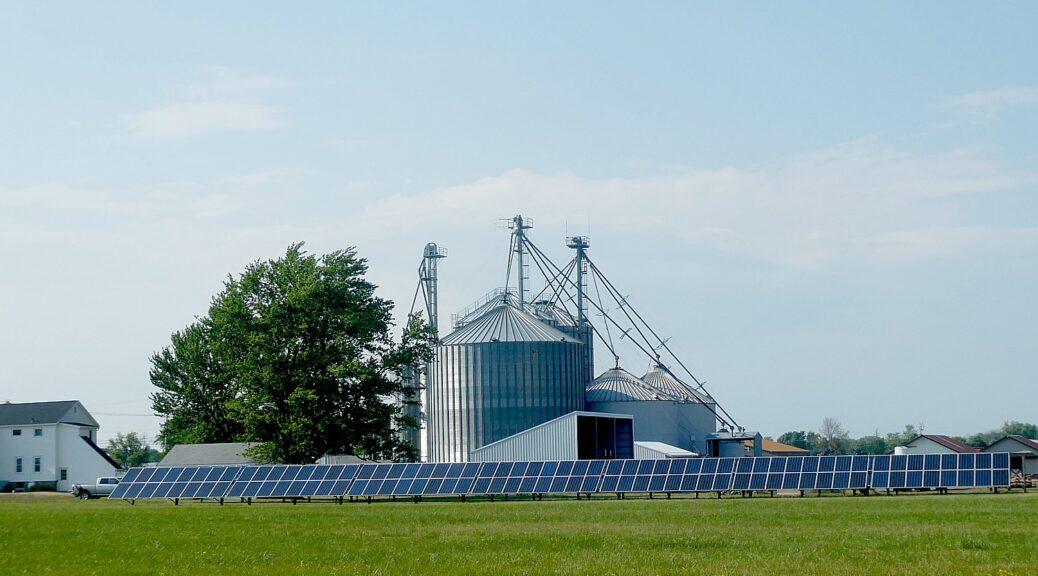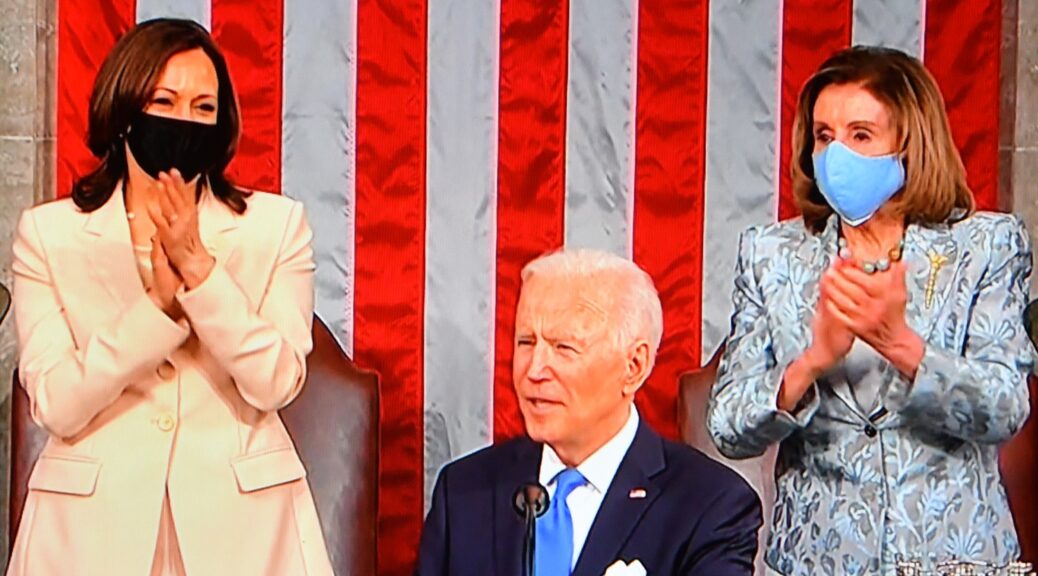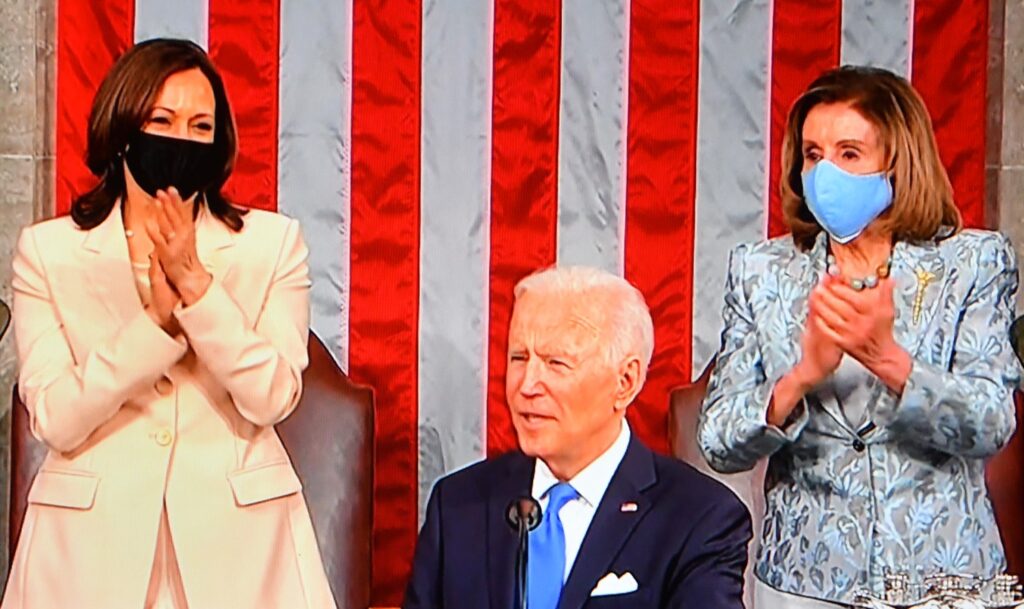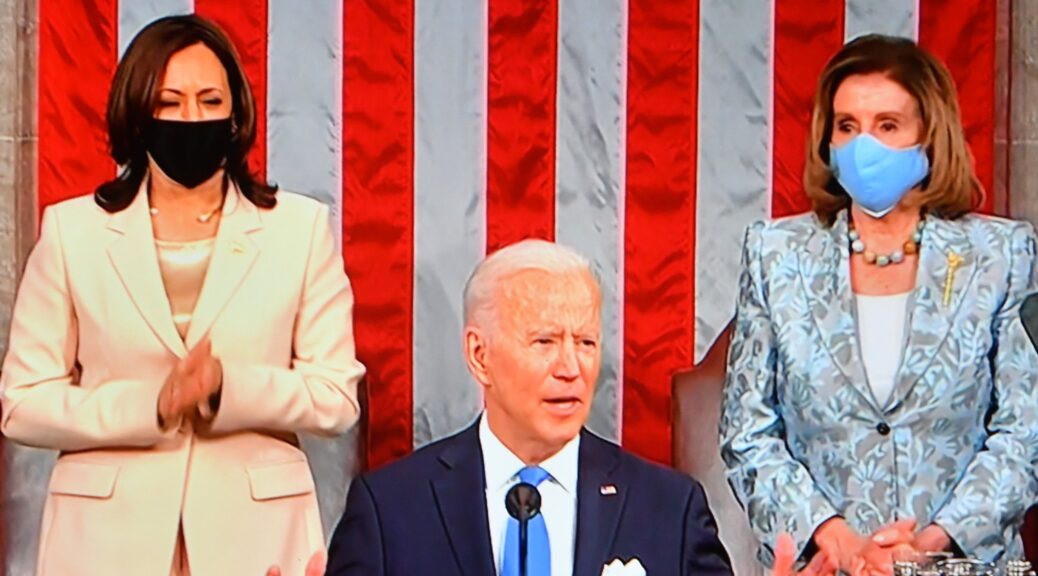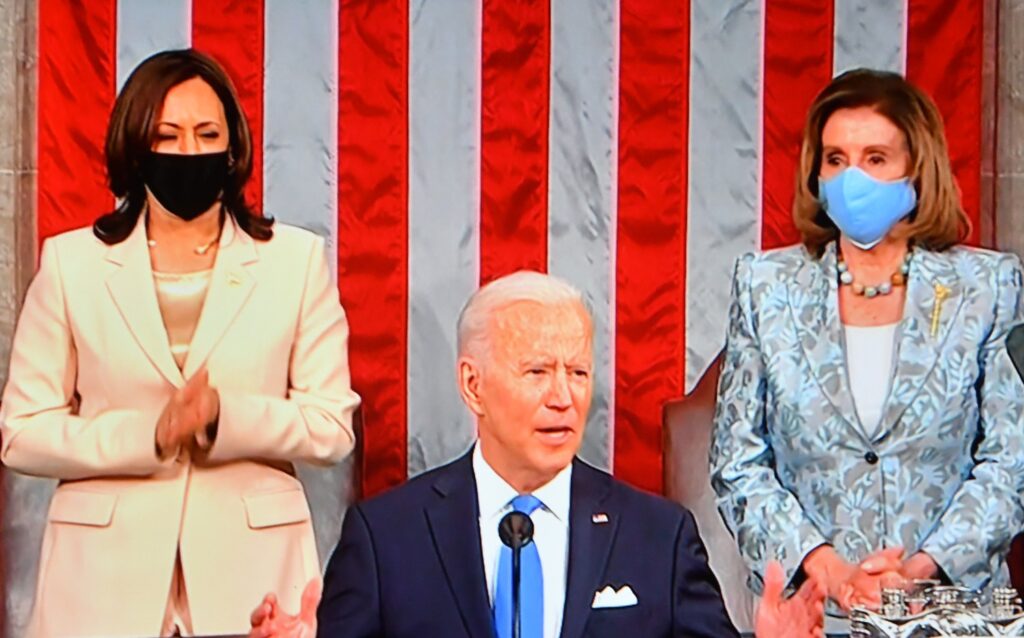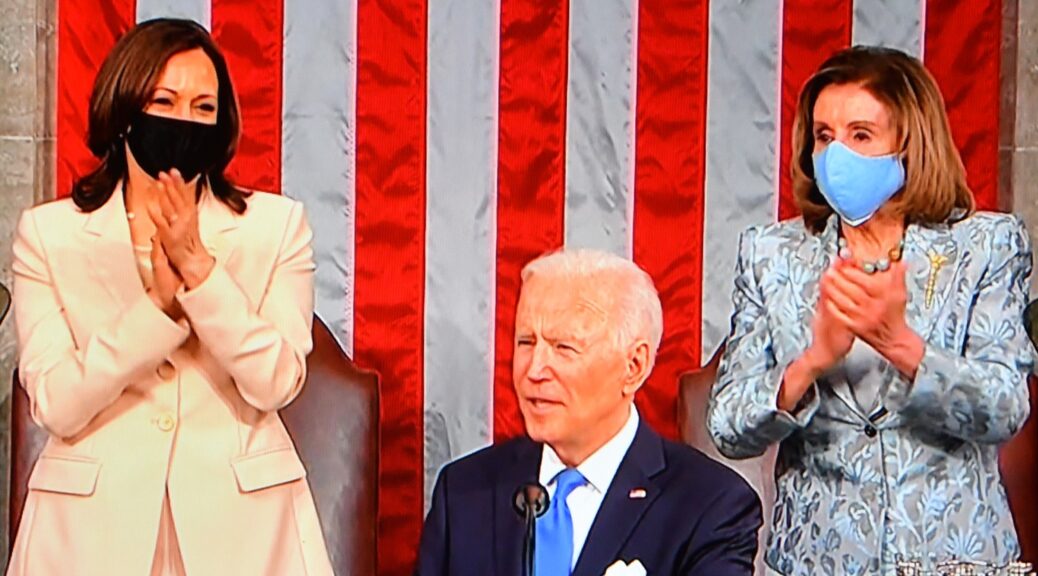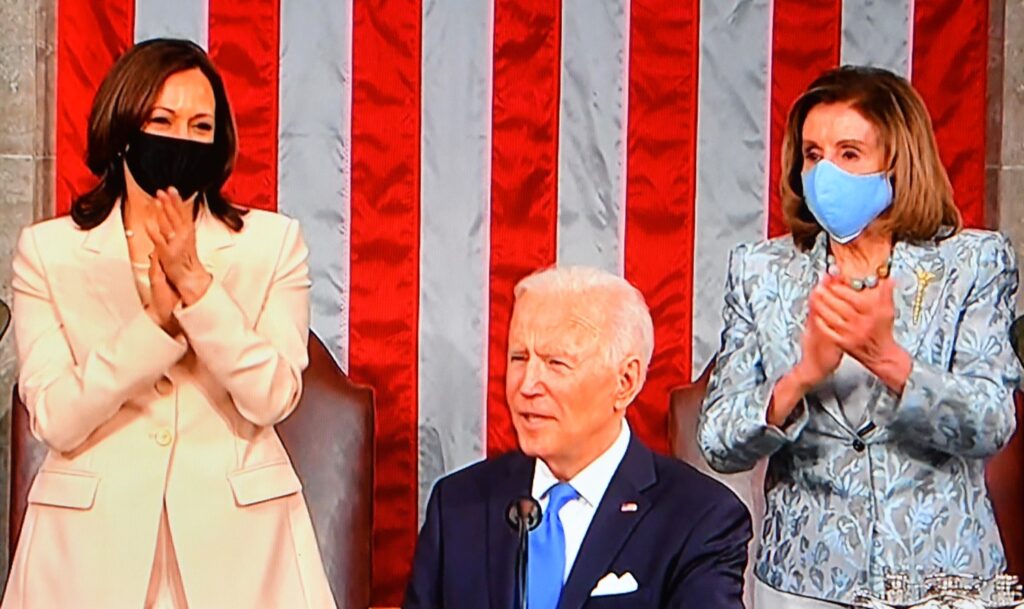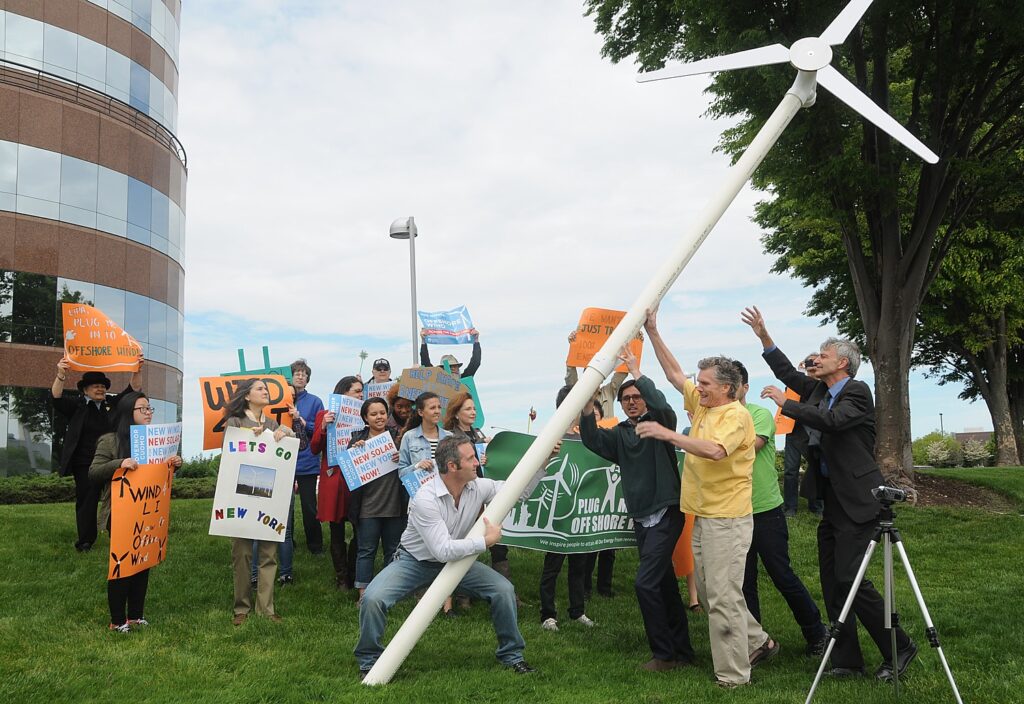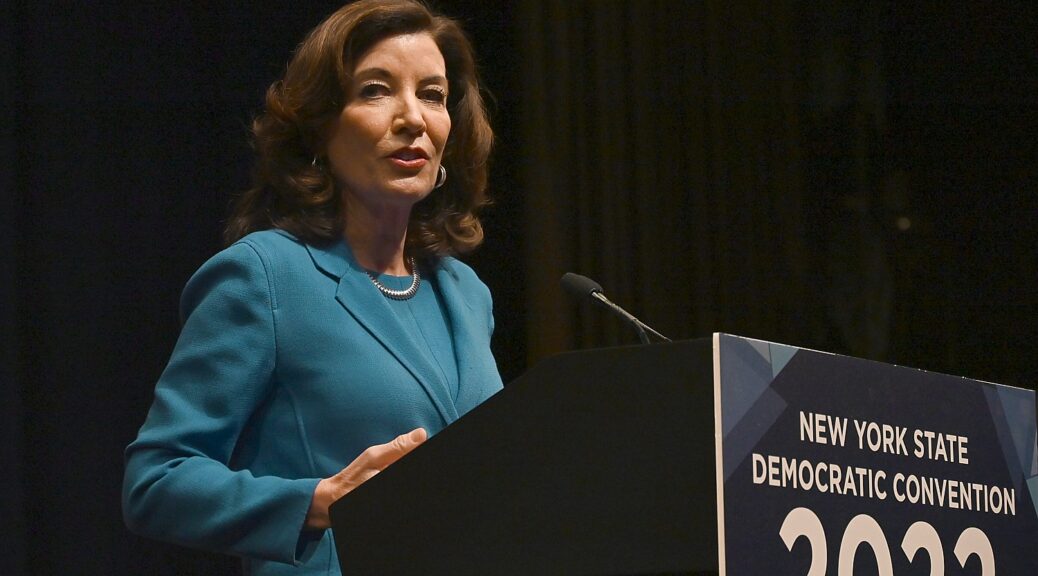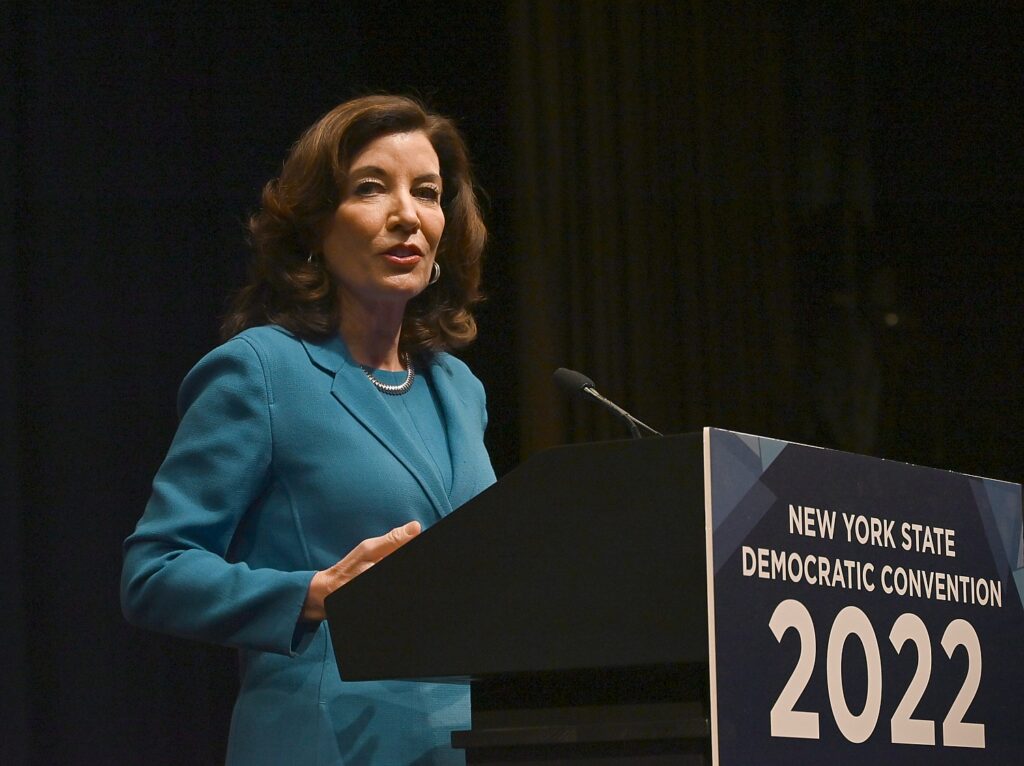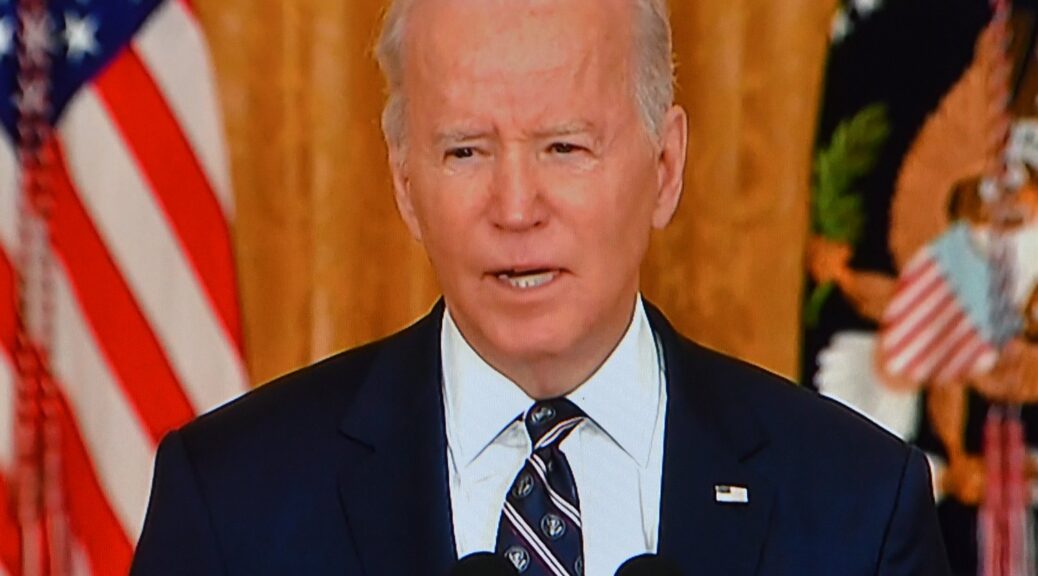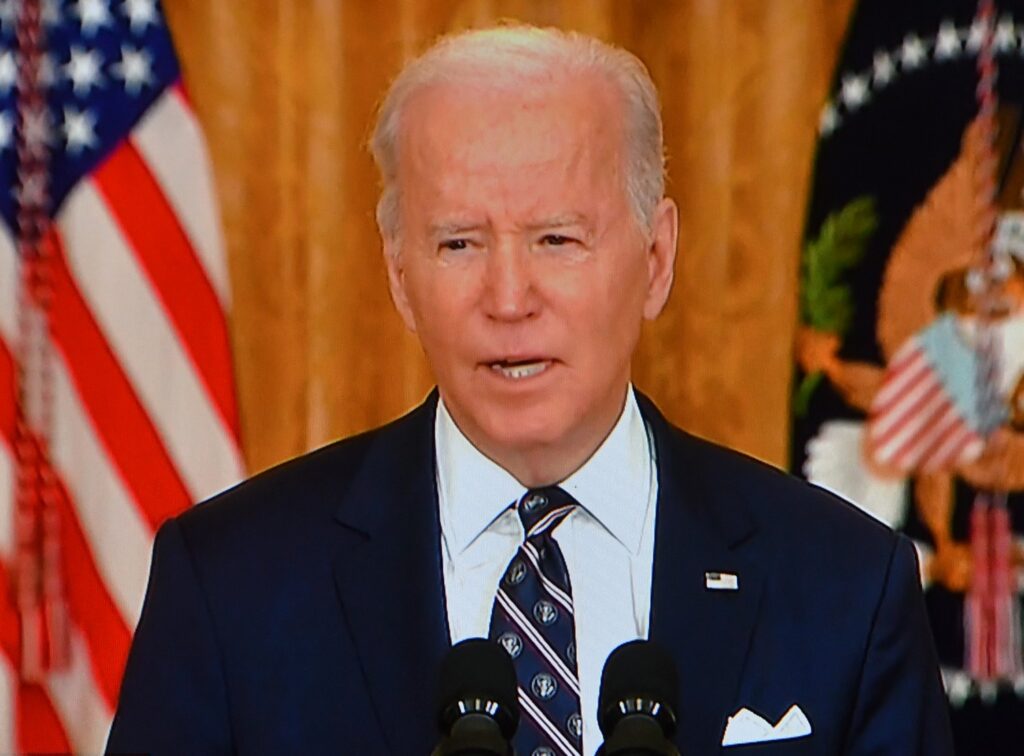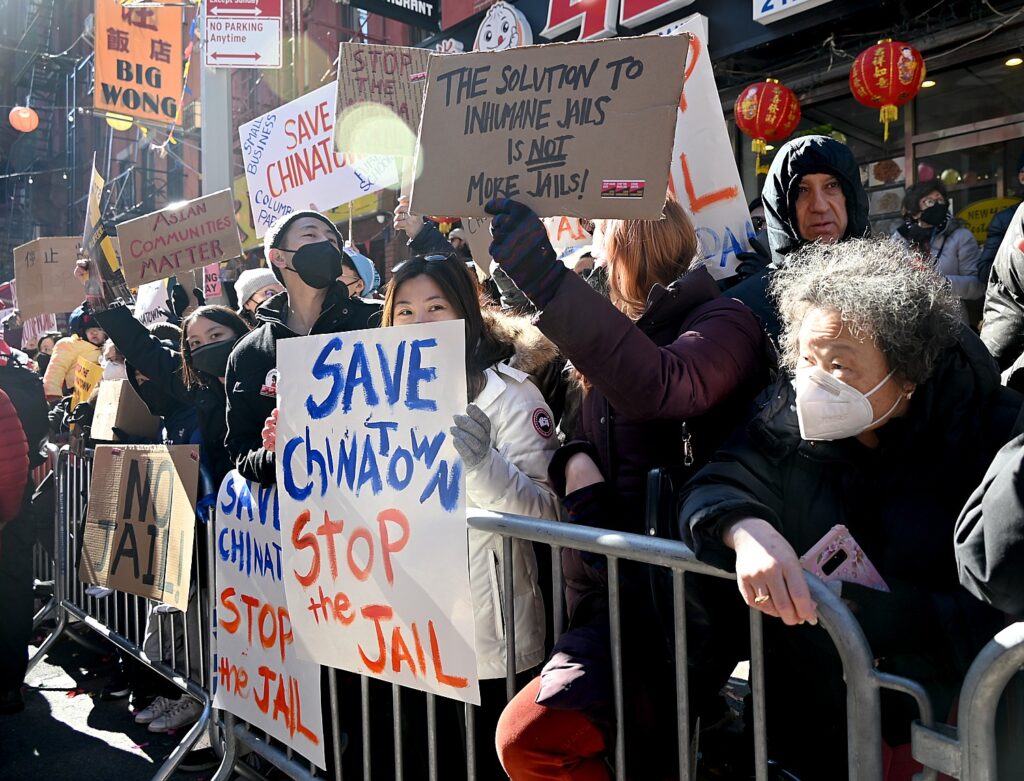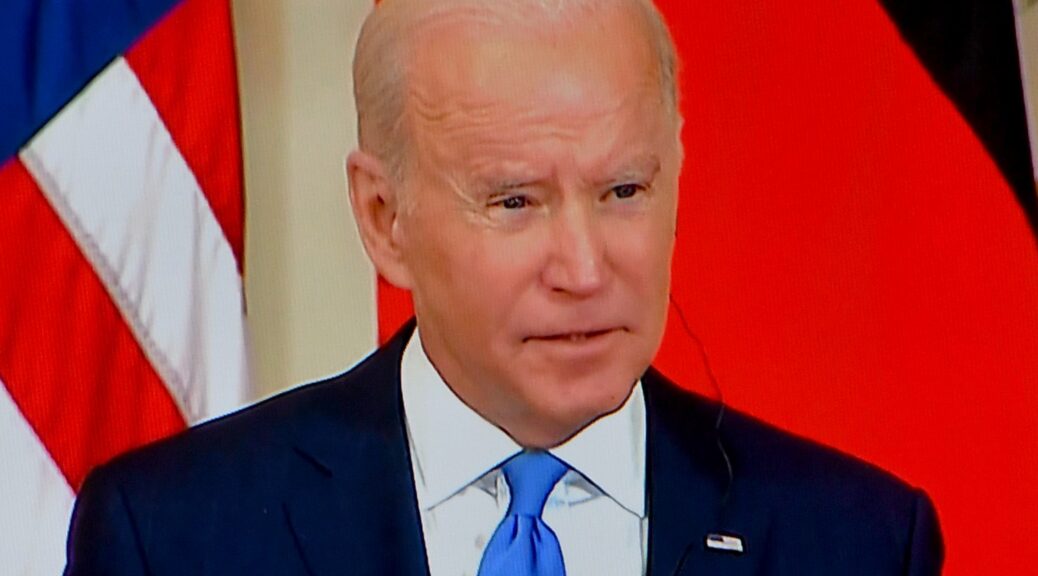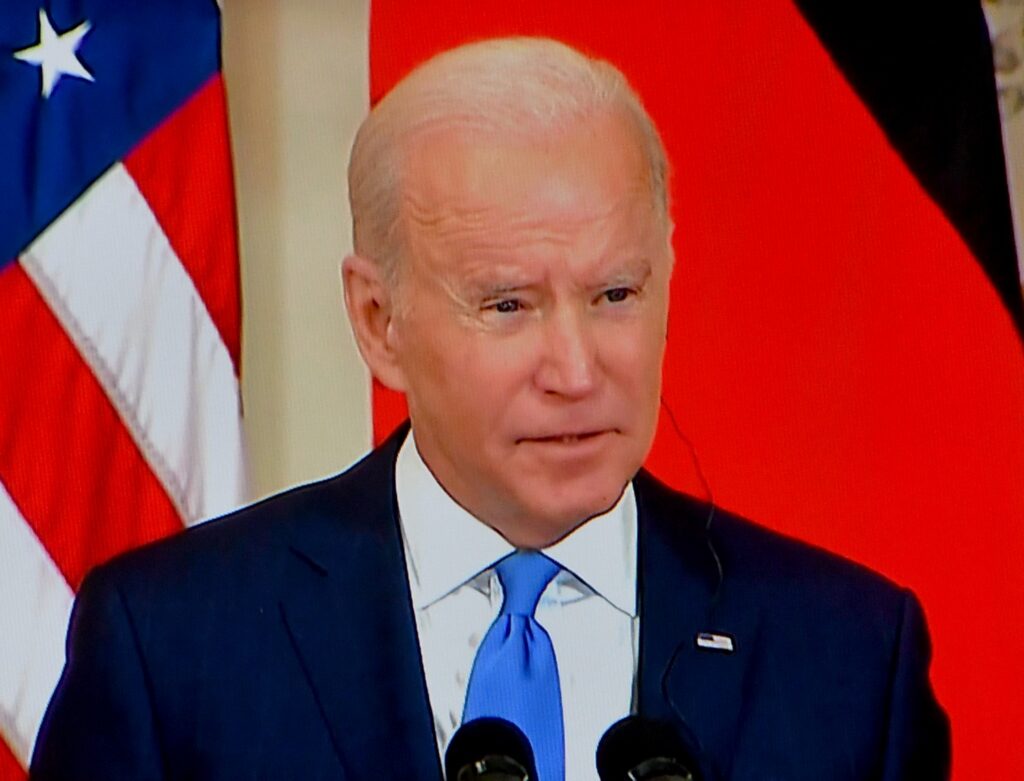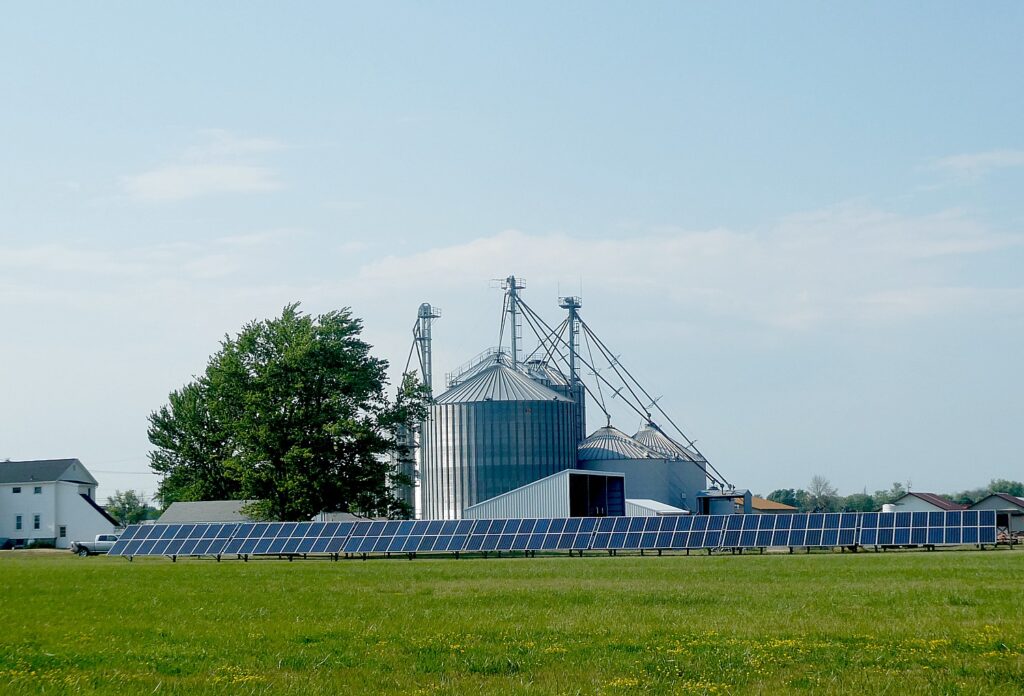
With the Russian invasion of Ukraine likely to take up a large measure of President Joe Biden’s first State of the Union speech, he is unlikely to have enough time or space to detail his accomplishments and his agenda going forward. Here are more details from the White House about the Biden Administration’s historic investments to create opportunity and build wealth in rural America:
President Biden is committed to ensuring that rural Americans have the opportunity to succeed – and that they can find that opportunity in rural America. This commitment is not just vital for rural Americans, but vital for the country as a whole. For centuries, rural Americans have driven the country’s economic growth and provided the country and the world with food and fuel—and they continue to do so today. They are small business owners revitalizing Main Streets. They care for our land, ensuring that all Americans have access to nature and recreation.
In its first year, the Biden Administration has made historic investments in rural communities through the American Rescue Plan: slashing poverty and lowering costs, creating jobs and new economic opportunities, and expanding access to health care. President Biden’s Bipartisan Infrastructure Law provides a once-in-a-generation federal investment so that all rural Americans gain access to clean drinking water, are able to use high-speed broadband internet for education and business, and have safe roads and bridges for both people and goods. In addition, the Administration has invested $2.8 billion in coal and power plant communities, ensuring that these communities that fueled our country’s industrial revolution will continue to thrive in decades to come.
In the year ahead, the Biden Administration will partner with rural America to determine how best to invest these unprecedented federal resources to support local priorities.
Lowering costs for working families in rural America
The Biden Administration is building a stronger, more equitable economy that does not leave anyone behind, including rural communities that for too long have faced underinvestment and persistent poverty. Already, because of the Administration’s support for working families through the American Rescue Plan, rural poverty is estimated to have fallen by 70 percent in 2021. President Biden knows working families are the backbone of our economy, and is delivering for them in rural America.
- Tax relief for rural working families. The American Rescue Plan increased the Child Tax Credit from $2,000 per child to $3,000 per child for children over the age of six, and from $2,000 to $3,600 for children under the age of six, while raising the age limit from 16 to 17 for 2021. The President’s plans call for extending this critical tax cut, which expired in December 2021. The American Rescue Plan also ensured that all lower- and moderate-income families were eligible for the full expanded child tax credit. In addition, the American Rescue Plan nearly tripled the maximum Earned Income Tax Credit for workers without dependent children to $1,500, benefitting about 2.7 million rural workers.
- Lowering rural Americans’ rent and mortgage payments and energy and water bills. The American Rescue Plan enabled single-family, COVID-affected borrowers with mortgages backed by the Department of Agriculture (USDA) to refinance their mortgages and provided rental assistance to 26,000 rural tenants. Rural Americans have also benefitted from the Department of the Treasury’s Emergency Rental Assistance Program and Homeowner Assistance Fund, which together provided tens-of-billions of dollars to keep people safely housed during the pandemic. In addition, the American Rescue Plan provided $4.5 billion for the Low Income Home Energy Assistance Program—more than doubling typical annual funding—and $500 million for the first-ever federal water assistance program, lowering water and wastewater bills for rural households.
- Lower child care costs and support child care providers. Even before the pandemic, nearly two-thirds of rural Americans lived in areas where there is a significant shortage of licensed child care slots, with nine infants and toddlers for every one child care slot in rural America. Rural children are less likely to be enrolled in pre-K programs than urban and suburban children. The pandemic made it harder for rural families to access these programs – with 1 in 11 licensed child care providers closing before between December 2020 and March 2021. The President secured $39 billion in American Rescue Plan funds to provide a lifeline to child care providers so they could stay open without raising prices for families. This funding has already reached more than 150,000 child care providers, including those across rural America. The American Rescue Plan also provided funding to all 1,600 Head Start grantees, which serve the vast majority of rural counties and sometimes serve as the only provider in a rural community. This funding helped allow these grantees to serve 91% of Head Start children fully in-person, compared to 38% in December 2020. Early care and education were out of reach for too many rural families before the pandemic, which is why the President has also called on Congress to cut child care spending in half for most families, offer every 3- and 4-year old free preschool, and boost the number of high-quality child care programs in high-need areas, including in rural America.
- Helping states and local governments – as well as tribes and territories – provide additional direct assistance to lower families’ costs. The American Rescue Plan delivered $350 billion for the State and Local Fiscal Recovery Fund, providing support for critical investments in 3,000 counties and 30,000 small towns. These funds offer the flexibility local governments need to address their communities’ most pressing needs. Already, over 20 states and scores of counties have used these funds to directly help families, including critical food assistance, utility assistance, and other help with basics for the hardest hit families. For example, Macon-Bibb County, GA committed $2.5 million to fight food insecurity in the community, including funds to address food deserts and support local food banks; New Hanover County, NH has committed $1 million to support homeowners who are behind on their mortgage; and Doña Ana County, NM has committed $1.2 million in direct medical relief funds for COVID-19 medical bills.
- Lowering costs and improving access to an education beyond high school for rural students. The Department of Education (ED) is investing $198 million in American Rescue Plan funding for competitive grants for rural colleges and universities that serve a high percentage of low-income students and are experiencing enrollment declines. With this funding, rural institutions can cover the cost of COVID-19 mitigation efforts, such as testing and personal protective equipment; support their students’ ability to meet basic needs by providing meal vouchers, childcare subsidies, and mental health services; facilitate continued enrollment and re-enrollment through support services such as academic counseling; and expand workforce programs that lead to in-demand jobs.
- Improved access to affordable, nutritious food for rural Americans. Through the American Rescue Plan, USDA expanded access to the Pandemic EBT (P-EBT) program, including through the summer, to allow families with children receiving school meals to purchase healthy food more easily. The American Rescue Plan also increased SNAP benefits by 15% through September 2021. Beginning on October 1, 2021, USDA’s Thrifty Food Plan update increased SNAP benefits by $36.30 per person per month on average. These updates will increase the well-being of 2.9 million people in rural areas, including 800,000 children, reducing rural poverty by 11 percent and rural child poverty by 20 percent. USDA also invested $1 billion, including $500 million in American Rescue Plan funding, in The Emergency Food Assistance Program (TEFAP) to support and expand emergency food access so states, food banks, and local organizations can reliably serve their communities, with a focus on reaching rural and underserved areas.
Creating jobs in rural America and supporting rural-led economic development
The Biden Administration is committed to expanding opportunity to all corners of the country. That means good-paying, union jobs and economic opportunity in rural communities so that today’s workers can live with dignity and security, and rural youth can see a bright future right in their hometowns. As of October 2021, the unemployment rate in rural counties that experience persistent poverty had returned to pre-pandemic levels, ranging from 3.4 percent to 4.7 percent. President Biden will continue building on that progress and the many efforts across the Administration to create jobs and build wealth in rural America.
- Build resilient rural economies. The American Rescue Plan invested a historic $3 billion in the Department of Commerce’s (DOC) Economic Development Administration (EDA) to build local economies that are resilient to future economic shocks, including a $300 million Coal Communities Commitment. In December 2021, EDA announced 60 finalists for its $1 billion Build Back Better Regional Challenge, which will support regional coalitions to develop transformative projects that strengthen regional industry clusters. These finalists include 12 coal communities, and more than 80% of the finalists propose to serve rural communities, including ten proposals focused on growing or developing agriculture and natural resource industries.
- Revitalize America’s energy communities. In February 2021, President Biden established the Interagency Working Group on Coal and Power Plant Communities and Economic Revitalization to identify and deliver resources to the coal, oil and gas, and power plant communities that have powered our country for generations. The working group identified 25 communities across the country for immediate strategic investment. Since then, member agencies have delivered more than $2.8 billion in federal investment to these communities, including $167 million through USDA’s Renewable Energy for America Program and the Electric Loan Program. The working group also established a resource clearinghouse with more than $181 billion in open and planned funding opportunities for energy communities, to facilitate access to federal programs.
- Invest in state and local workforce programs and small business support. More than half of all states are using the American Rescue Plan State and Local Fiscal Recovery Fund to retain and train workers for new and better jobs, and over 20 states have provided direct support to small businesses. Wisconsin’s $9.4 million investment in American Rescue Plan funds in University of Wisconsin-Eau Claire’s regional workforce development strategy recruits and connects rural workers and students with careers in healthcare, education, and social services – areas where the state has critical shortages. Gallatin County, MT is investing $2 million in American Rescue Plan funds to develop and expand programs in construction trades, welding, fabrication, manufacturing and healthcare. And, local governments are using American Rescue Plan funds to retain essential workers across the country, from Erie, NY to St. Croix County, WI to Umatilla County, OR.
- Support outreach and technical assistance to rural businesses. The Small Business Administration’s (SBA) Community Navigator Pilot Program, funded by the American Rescue Plan, is reducing barriers that underrepresented and underserved entrepreneurs – including those in rural America – often face in accessing the resources they need to recover, grow, or start their businesses. The program is providing a total of $100 million to 51 nonprofits, state and local governments, universities, and tribal entities that will work with organizations in all 50 states and Puerto Rico to provide technical assistance to small businesses in underserved communities.
- Advance workforce development solutions in rural communities. The Department of Labor’s (DOL) Workforce Opportunity for Rural Communities Initiative (WORC) is a partnership with the Appalachian Regional Commission and the Delta Regional Authority to support workers in rural communities impacted by economic transitions, especially in the energy sector. WORC funds provide job training and support services to dislocated workers, incumbent workers, and new entrants to the workforce to help connect them with good jobs in high-demand occupations. In 2021, DOL announced a third round of WORC grants for $29 million to 23 organizations, demonstrating the Biden Administration’s ongoing commitment to strengthening economic stability and opportunities for workers in rural communities.
- Grow rural America’s outdoor recreation economy by expanding hunting and fishing. To help expand rural America’s outdoor recreation economy, the Biden Administration last year opened new or expanded hunting and fishing opportunities on 2.1 million acres of public lands, the largest such expansion in U.S. history. The Administration also recently announced a record $1.5 billion in annual funding through the Wildlife and Sport Fish Restoration Program to support state and local outdoor recreational opportunities, and wildlife and habitat conservation efforts. These efforts, along with a new Task Force on Collaborative Conservation that the Administration launched in partnership with the Western Governors Association, will support America’s hunting and fishing traditions and help power the continued growth of the nation’s outdoor economy. In addition, the Departments of Agriculture and the Interior are collaborating to invest $2.8 billion under the Great American Outdoors Act to improve access, experiences, and partnerships for outdoor recreation that not only promote tourism but also protect America’s public lands while creating jobs and opportunities in rural communities. EDA is also investing $750 million in American Rescue Plan funding through the Travel, Tourism & Outdoor Recreation program, including $510 million that has already been provided to states.
Responding to the COVID-19 pandemic in rural communities
The COVID-19 pandemic spared no part of the country, but rural communities have faced additional challenges that impact the delivery of services and assistance, including limited health care infrastructure and clinicians. As our nation turned the tide of the pandemic from crisis to recovery, the Biden Administration worked to ensure rural communities have the tools they need to combat COVID-19, keep schools open and safe, and come back stronger than before.
- Safely reopen rural schools and help students make up for lost learning time. The American Rescue Plan surged $130 billion to our states, territories, tribes, and local communities to help them safely reopen our schools and keep them open, while addressing the impacts of the pandemic on students, including on their learning and mental health. Roughly $16 billion of these funds went to rural communities and $850 million went to Bureau of Indian Education (BIE) schools and Tribally-controlled Colleges and Universities (TCCUs). These are critical resources that are helping rural communities and school districts meet key challenges, including funds that school districts can use to address staff shortages. In addition, investments in broadband in the Bipartisan Infrastructure Law will be critical to supporting the education of young people in rural communities and closing the homework gap. As part of the Biden Administration’s commitment to reopen healthy learning environments, USDA issued a broad range of flexibilities and provided significant additional resources to allow school meal programs across the country to return to serving nutritious meals in fall 2021.
- Dedicated COVID-19 testing for rural hospitals and clinics. The Biden Administration delivered $425 million in American Rescue Plan funding to support COVID-19 testing and mitigation in 4,200 rural health clinics, and $398 million in funding to support COVID-19 testing and mitigation for over 1,500 small rural hospitals. HHS provided up to $100,000 per clinic and up to $230,000 per hospital to increase COVID-19 testing, expand access to testing in rural communities, and broaden efforts to respond to and mitigate the spread of the virus in ways tailored to community needs.
- Deliver rapid tests to rural health clinics. HHS is currently distributing millions of rapid over-the-counter at-home COVID-19 tests to rural health clinics that reach uninsured and underserved communities, often among those hardest-hit by the pandemic.
- Increase vaccine education and outreach efforts in rural communities. The Biden Administration awarded over $100 million in American Rescue Plan funding to rural health clinics across the country to support vaccine outreach in rural communities. This funding is being used to assist rural residents in accessing vaccinations, as well as education and outreach efforts around the benefits of vaccination.
- Expand access to COVID-19 vaccines, testing, and supplies, while strengthening rural health care providers. The American Rescue Plan provided $500 million for USDA to create the Emergency Rural Health Care Grant Program. The program provides $350 million to help rural hospitals and local communities increase access to COVID-19 vaccines and testing, medical supplies, telehealth, and food assistance, and support the construction or renovation of rural health care facilities. It also provides recovery funds that compensate for lost revenue or staffing expenses due to COVID-19. In addition, the program provides up to $125 million in grants to plan and implement models that help improve the long-term viability of rural health care providers, including health care networks that allow rural providers to collectively address community challenges and develop innovative solutions.
Improving access to health care and lowering health care costs for rural communities
Rural communities face persistent disparities in health outcomes and access to care, including higher rates of uninsured individuals, health care workforce shortages, and often difficulty reaching the nearest hospital. In many rural communities, the hospital is the largest employer in the area, providing jobs and supporting the local economy. Yet, rural hospitals have increasingly closed their doors, including 19 in 2020 alone. And rural hospital closures have been pervasive in non-expansion states. Of the ten states with the most rural hospital closures since 2010, most are in non-expansion states —the only two that are not, Oklahoma and Missouri, just began their expansions in 2021. Moreover, rural counties in the South are racially and ethnically diverse, and in some non-expansion states, rural hospitals that closed were more likely to be in counties with a higher share of Black residents. Similar disparities exist for rural hospitals at risk of closure. The Biden Administration is taking action to improve the health of rural communities by ensuring rural Americans have the health care and coverage they need and deserve and helping rural hospitals stay open.
- Lower health care costs for rural Americans. The American Rescue Plan has done more to lower costs and expand access to health care than any action since the passage of the Affordable Care Act. It has made quality coverage more affordable than ever—with families saving an average of $2,400 on their annual premiums, and four out of five consumers finding quality coverage for under $10 a month. The President’s plan continues these savings, keeping health insurance affordable for millions of Americans, including those living in rural communities.
- Expand rural health care coverage and keep rural hospitals open. Since President Biden took office, nearly 700,000 rural Americans have gained coverage through the Affordable Care Act and the American Rescue Plan. Throughout 2021, the Administration ensured that rural Americans who needed coverage could sign up for it, including through the most recent HealthCare.gov Open Enrollment period in which over 1.8 million rural Americans enrolled in coverage. The President’s plan builds on that progress, expanding Medicaid coverage in those states that have refused to expand it. Closing this gap is estimated to reduce the risk of rural hospital closure by 62%. Rural hospital closures deprive people living in rural areas of crucial services, including access to emergency care. To fill this gap, HHS will establish a new provider type, Rural Emergency Hospitals, which will allow facilities to offer emergency department services, observation care, and/or outpatient services in rural areas.
- Support rural health care providers. The American Rescue Plan provided $8.5 billion in American Rescue Plan funding to help compensate health care providers who serve rural Medicare, Medicaid, and Children’s Health Insurance Plan (CHIP) patients for lost revenue and increased expenses associated with COVID-19. In December 2021, HHS announced that it distributed $7.5 billion of these funds to 40,000 providers in all 50 states, Washington, D.C., and six territories. These funds help ensure that providers can effectively respond to the COVID-19 pandemic, including supporting recruitment and retention efforts amidst workforce shortages and staff burnout, and place them on stable financial footing to continue serving their communities into the future.
- Increase the number of health care providers in rural communities. The Administration made a historic $1.5 billion investment, including $1 billion from the American Rescue Plan, in its health workforce loan repayment and scholarship programs. More than 22,700 primary care clinicians funded by these programs now serve in underserved communities, including rural and tribal communities—the largest number ever. This group of health care providers includes nearly 20,000 National Health Service Corps members, more than 2,500 Nurse Corps nurses, and approximately 250 awardees under a new program, the Substance Use Disorder Treatment and Recovery Loan Repayment Program. Currently, one-third of HHS’s Health Resources and Services Administration workforce serves in a rural community where health care access may be especially limited or require patients to travel long distances to receive treatment. HHS is also making $48 million from the American Rescue Plan available to expand public health capacity in rural and tribal communities through health care job development, training, and placement. This will increase the number of well-trained health care professionals and connect them with future employers, including hospitals and clinics in rural areas.
- Expand access to pulmonary rehabilitation services. This year, HHS will support a demonstration project to enhance access to pulmonary rehabilitation services in Critical Access Hospitals that serve rural communities with high rates of chronic obstructive pulmonary disease (COPD). COPD is one of the leading causes of death in the U.S., and adults in rural areas are almost twice as likely to have it compared to those in urban areas.
- Expand Veterans Affairs training programs for rural providers outside of the VA system. The Rural Interprofessional Faculty Development Initiative, developed by the Department of Veterans Affairs (VA), is an innovative two-year training program designed to provide teaching and training skills for clinicians in rural settings, preparing rural clinicians to take on faculty roles, mentor medical professionals to serve in rural America, and grow the healthcare workforce in rural communities. In 2021, VA launched a new joint initiative with HHS, adding non-VA community clinicians to the program. This joint initiative will benefit up to 40 rural communities each year and enable rural clinicians to better train the next generation of clinicians who will serve rural America.
- Increase access to telehealth. Telehealth services greatly increased during the pandemic and the Biden-Harris Administration has issued several telehealth supports including research conducted by NIH; funding for broadband, smart phones and internet connectivity; and an expansion of eligible services that can be delivered via telehealth, including a new rule that expands access to tele-mental health services for Medicare beneficiaries. Medicare will also now pay for mental health visits furnished via telehealth when they are provided by Rural Health Clinics and Federally Qualified Health Centers. This policy expands access to Medicare beneficiaries, especially those living in rural and other underserved areas.
- Ensure access to effective treatment and recovery for substance use disorders. In January, HHS announced the availability of $13 million in funding to increase access to behavioral health care services and address health inequities in rural America, including through evidence-based, trauma-informed treatment for substance use disorder.
- Address America’s mental health crisis. Through the American Rescue Plan, the Administration has made significant investments in expanding access to mental health and substance use services. The President’s FY22 budget also calls for investments in the mental health care workforce that will help address the shortage of professionals in rural and underserved areas. The Administration is committed to additional actions to address the mental health crisis by building workforce capacity, connecting more people to care, and creating a continuum of support for all Americans.
- Support states in making public health investments through the American Rescue Plan State and Local Fiscal Recovery Fund. Over two thirds of states and hundreds of communities have already committed funds from the American Rescue Plan State and Local Fiscal Recovery Fund to address public health needs in their communities. For example, the State of Colorado is investing in an online training curriculum for providers in rural areas on mental health and substance use disorders to improve behavioral health supports. Bowie County, TX partnered with Christus St. Michael Hospital to provide vaccines at the hospital facility and several mobile vaccine clinics throughout the county, to reach the rural area of the county.
Rebuilding rural America’s infrastructure with a once-in-a-generation investment
For far too long, critical infrastructure needs in rural communities have been ignored. Building on an initial investment in the American Rescue Plan, the Bipartisan Infrastructure Law delivers on the President’s promises to provide high speed internet, safe roads and bridges, modern wastewater systems, clean drinking water, reliable and affordable electricity, and good paying jobs in every rural community. A generational investment in rural America, the Bipartisan Infrastructure Law will spend billions of dollars to revitalize and rebuild rural communities across the country.
- Provide high-speed internet to every home and making internet affordable for low-income rural Americans. By one definition, more than 30 million Americans live in areas where there is no broadband infrastructure that provides minimally acceptable speeds – a particular problem in rural areas across the country. The Bipartisan Infrastructure Law invests $65 billion to make high-speed internet available to all Americans, bring down high-speed internet prices across the board, and provide technical assistance to rural communities seeking to expand broadband. In addition, it will help families afford internet service by providing eligible households with a discount of up to $30 per month toward internet services, as well as a one-time discount of up to $100 to purchase a laptop, desktop or tablet.
- Invest in critical rural broadband and water infrastructure through the American Rescue Plan State and Local Fiscal Recovery Fund. Through the American Rescue Plan’s State and Local Fiscal Recovery Fund, 20 states have expanded access to high-speed internet and 21 states are improving water and sewer infrastructure, including lead removal. Additionally, many local communities are leveraging American Rescue Plan funds to expand broadband services in rural areas. For example, Kandiyohi County, MN made an initial $1.3 million investment in a project that will expand high-speed broadband to rural townships. Miami County, FL allocated $1.4 million to help fund an expansion of high-speed internet to rural parts of the county, including to underserved students in low-income areas. Oconto County, WI approved $2 million to provide high-speed wireless internet to underserved rural areas.
- Create good-paying jobs cleaning up legacy pollution in rural communities. The President is committed to creating good-paying jobs in rural communities across the country and ensuring those communities are safe, high-quality places to live. Legacy pollution from industries that extracted natural resources from rural areas and left behind huge quantities of environmental degradation has held back the economic growth and success of rural communities. The Bipartisan Infrastructure Law is creating good-paying jobs cleaning up these sites by investing $4.7 billion through an interagency initiative to plug, remediate, and restore dangerous orphan well sites across the country; nearly $11.3 billion to create good-paying union jobs and catalyze economic opportunity by reclaiming abandoned mine lands; and $1 billion to initiate cleanup and clear the backlog of 49 previously unfunded Superfund sites and accelerate cleanup at dozens of other sites across the country.
- Improve rural Americans’ access to transit systems and functional highway systems to they can get to school and work and bring their products to market. Limited access to transportation options in rural and remote areas impedes American’s access to jobs, basic services, and their communities. The Bipartisan Infrastructure Law invests billions of dollars to make sure rural families can get where they need to go, including through a $4.58 billion investment in Rural Area Formula Grants at the Department of Transportation (DOT). This program will support 1,300 rural transit systems by enabling them to purchase transit vehicles and infrastructure, plan transit more effectively, and fund operations. This investment builds on $282 million in American Rescue Plan funding that helped rural transit systems maintain and restore service during the pandemic.
- Ensure clean drinking water and basic sanitation in rural homes. Across the country, including in rural and Tribal communities, pipes and treatment plants are aging and polluted drinking water endanger public health. The Bipartisan Infrastructure Law’s transformative $55 billion investment in our water and wastewater infrastructure will fundamentally change quality of life for millions of Americans by eliminating lead pipes, providing critical access to sanitation, ensuring access to affordable clean drinking water, and reducing drought.
- Build rural communities resilient to natural disasters and the threats of climate change. Last year, the United States faced 22 extreme weather and climate-related disaster events with losses over $1 billion – a cumulative price tag of nearly $100 billion. These included damaging floods, wildfires, and wind storms across rural America. The Bipartisan Infrastructure Law will improve the resilience of rural communities by investing $3.5 billion to improve home energy efficiency for low-income families, reducing energy costs, improving household comfort and safety, and cutting pollution.
- Invest in resilience and restoration on national forest lands. The Bipartisan Infrastructure Law will restore our national forests through the planting of 1.2 billion trees over the next decade, coupled with landmark investments in science-based hazardous fuels treatments that will protect communities from wildfire. The resources in the Bipartisan Infrastructure Law will provide a critical down payment to implement the USDA Forest Service’s 10-year strategy to reduce wildfire, which has a goal of treating 50 million acres across Federal and non-Federal lands.
- Provide high-quality, safe roads and bridges for rural communities. While Americans living in rural areas account for just 20% of the population, they comprise nearly half of all roadway fatalities. The Bipartisan Infrastructure Law will deliver safer roads, bridges, railway crossings, and other critical improvement to the quality and safety of our roadways. The Bipartisan Infrastructure Law also invests $1.2 billion to complete the Appalachian Development Highway System, connecting the rural regions of Appalachia, creating jobs, and linking businesses with domestic and international markets.
- Upgrade electric and transmission infrastructure in rural America. Power outages cost the U.S. economy up to $70 billion annually. For example, the recent Texas power outages caused estimated losses of up to $90 billion for the state. At times, rural communities can be without power for days during these outages. The Bipartisan Infrastructure Law invests $1 billion in Energy Improvement in Rural or Remote Areas to support entities in rural or remote areas to increase environmental protection from the impacts of energy use and improve resilience, reliability, safety, and availability of energy.
- Explore the use of materials made from bioproducts to open up new market opportunities for farmers. The Bipartisan Infrastructure Law invests $10 million in grants to support research on the economic, social and environmental benefits of using materials derived from bioproducts in the development and manufacturing of construction and consumer products.
Strengthening the food system and creating market opportunities for America’s farmers, ranchers and foresters
Throughout the COVID-19 pandemic, American farmers, ranchers, processors, farmworkers, and other workers across the supply chain continued to adapt and put food on the table for American families, despite disruptions and other challenges. The Biden-Harris Administration is building on lessons learned during the pandemic to transform the food system so that it is more competitive, balanced, and equitable for everyone working in food and agriculture.
- Address supply chain disruptions for families and farmers. As part of a whole-of-government response to tackle new and emerging near-term supply chain disruptions arising from the COVID-19 pandemic and historic economic recovery, President Biden established a Supply Chain Disruptions Task Force in June, bringing together industry, labor, and federal partners to alleviate bottlenecks and higher input costs for farmers, address rising prices at the grocery store, and support agricultural exporters. For example, USDA is leveraging $100 million in American Rescue Plan funds to offer a Food Supply Chain Guaranteed Loan Program, making available nearly $1 billion in loan guarantees to back private investment in processing and food supply infrastructure that will strengthen the food supply chain for the American people and create jobs in rural communities.
- Advance equity in agriculture. In February 2022, USDA held the first meeting of the new USDA Equity Commission, which is supported by the American Rescue Plan and will evaluate USDA programs and services and recommend how USDA can reduce barriers for accessing them. Additionally, USDA has begun to deploy American Rescue Plan funds to support technical assistance and access to land, credit, and markets for historically underserved producers. USDA provided $50 million in Natural Resource Conservation Funds to organizations working with underserved communities and another approximately $75 million in American Rescue Plan funding to 20 organizations to provide technical assistance to connect underserved producers with USDA programs and services. Additionally, in July 2021, USDA rolled out the Heirs’ Property Relending Program, which provides funds to assist heirs in resolving ownership and succession issues on farmland with multiple owners.
- Support a fairer, more competitive, and more resilient meat and poultry supply chain. In, January 2022, the Biden-Harris Administration announced its Action Plan for a Fairer, More Competitive, and More Resilient Meat and Poultry Supply Chain, outlining how USDA will invest an additional $900 million in American Rescue Plan funding. As part of this effort, USDA recently announced $150 million in grants for new and expanded processing through a new Meat and Poultry Processing Expansion Program, $25 million to provide technical assistance support, and $40 million to support workforce development and training, including at community and junior colleges and Minority-Serving Institutions. As part of the Action Plan, USDA will invest $500 million in additional grants and lending to further strengthen financing for independent processing, along with $85 million in additional funding for workforce development and to promote innovation in this sector. This work builds on the $100 million already available to reduce overtime and holiday inspection fees to help small processing plants keep up with unprecedented demand. This also builds on USDA’s December 2021 announcement of $32 million in pandemic assistance funds to more than 160 meat and poultry processors, helping them get federally inspected so they can reach more customers.
- Issue stronger rules under the Packers & Stockyards Act and new rulemaking on “Product of USA” labeling to protect farmers, ranchers, and consumers, as well as promote an all-of-government approach to strengthening competition. USDA has begun work on three proposed rules to provide greater clarity and strengthen enforcement under the Packers & Stockyards Act, and USDA will also pursue rulemaking to ensure the “Product of USA” label for meat products meets consumer expectations and allows for fair and competitive markets. In February 2022, the Department of Justice (DOJ) and USDA launched a new joint initiative to better coordinate their enforcement efforts, including a new portal—FarmerFairness.gov—for reporting concerns about potential violations of competition laws. And today, the President is announcing an historic agreement between the DOJ and the Federal Maritime Commission to put more cops on the beat to ensure large, foreign ocean carriers cannot take advantage of U.S. farmers, businesses, and consumers.
- Ensuring nutritious food gets to those who need it while opening up new market opportunities for farmers and ranchers. In December 2021, USDA committed $1.5 billion in funds from the Commodity Credit Corporation to help schools make direct food purchases and access food purchased by USDA and will also invest in cooperative agreements with state and Tribal governments to purchase foods from local underserved producers. All purchases will support domestic agriculture. Additionally, in December 2021, USDA announced a new Local Food Purchase Assistance Cooperative Agreement Program that will award up to $400 million for emergency food assistance purchases of domestic local foods. Utilizing American Rescue Plan funds, these purchases will expand local and regional markets and place an emphasis on purchasing from historically underserved farmers and ranchers.
- Ensuring all of agriculture benefits from financial assistance to address the impacts of COVID-19. The pandemic affected all of agriculture, but many farmers did not benefit from previous rounds of pandemic-related assistance under the previous administration’s Coronavirus Food Assistance Program (CFAP). The Biden-Harris Administration worked to fill those gaps to help get financial assistance to a broader set of producers, including to underserved communities, small and medium sized producers, and farmers and producers of less traditional crops. USDA announced ‘Pandemic Assistance for Producers’ to distribute resources more equitably and committed to directing at least $6 billion to the agricultural producers and sectors that needed assistance the most. This includes re-opening signup for CFAP2, $700 million in grants to provide relief to farm and food workers affected by COVID-19; $700 million to provide relief for small producers, processors, farmers markets and seafood vessels affected by COVID-19; and $2 million to establish partnerships with organizations to provide outreach and technical assistance to historically underserved farmers and ranchers. As a result, there was a fourfold increase in participation among historically underserved producers in CFAP2 since April 2021.
- Invest in farmworker training. DOL’s National Farmworker Jobs Program provides grants to community-based organizations and public agencies to enable farmworkers to receive skills training, career services and other critical services like housing assistance to help them obtain, retain and advance in the agricultural sector. DOL awarded $87 million in career services and training grants across the United States and Puerto Rico and $6.2 million in housing grants.
- Pay farmers, ranchers, and forest landowners to be part of the solution to climate change. In February 2022, USDA launched a $1 billion investment in partnerships to support America’s climate-smart farmers, ranchers, and forest landowners. The new Partnerships for Climate-Smart Commodities opportunity will finance pilot projects that create market opportunities for U.S. agricultural and forestry products that use climate-smart production practices and include innovative, cost-effective ways to measure and verify greenhouse gas benefits. USDA has also invested $50 million in new 118 partnerships to expand access to conservation assistance for climate-smart agriculture and forestry. The new Equity Conservation Cooperative Agreements will fund two-year projects to expand the delivery of conservation assistance to farmers who are new to farming, low-income, historically underserved, or military veterans.
- Reward farmers, ranchers, and forest owners for their voluntary conservation efforts. Recognizing the critical role that America’s farmers, ranchers, and forest-owners play in the stewardship of the nation’s lands, waters, and wildlife, the Administration is, as part of the President’s America the Beautiful Initiative, expanding support for voluntary conservation efforts on private lands. USDA, for example, has made changes to its Conservation Reserve Enhancement Program to remove barriers to access and provide partners increased flexibility to participate in and benefit from the program. USDA enrolled 5.3 million new acres in the Conservation Reserve Program by raising rental payment rates and expanding the number of incentivized environmental practices allowed under the program.
- Support renewable fuel producers and infrastructure. USDA has dedicated $700 million to provide economic relief to biofuel producers and restore renewable fuel markets affected by the pandemic, and committed to $100 million to increase the sales and use of higher blends of bioethanol and biodiesel by expanding the infrastructure for renewable fuels derived from U.S. agricultural products.
- Facilitate U.S. agricultural products in reaching export markets. USDA is working with the Port of Oakland to set up a new “pop-up” site to make it easier for agricultural companies to fill empty shipping containers. The new site, supported by Commodity Credit Corporation funds, will provide access to equipment and provide trucks faster turns without having to wait for in-terminal space. The Port of Oakland is a potential model for other ports experiencing similar issues. The Administration also continues to call on ocean carriers to mitigate disruptions to agricultural shippers by restoring full and fair service to the Port of Oakland. In addition, over $600 million in American Rescue Plan resources have already been announced to strengthen the port workforce and improve facility efficiency at our most critical ports, from California and Florida to Massachusetts and Louisiana.
- Ensure trade rules work for American farmers and ranchers. The United States prevailed in the first dispute settlement panel proceeding under the U.S.-Mexico-Canada Agreement (USMCA), bringing the U.S. dairy sector one step closer to realizing the full benefits of the USMCA. The Administration scored another trade policy win when Vice President Kamala Harris traveled to Hanoi in August 2021, securing a commitment from the Vietnamese government to reduce tariffs on U.S. agricultural products. This will give U.S. corn, wheat, and pork producers greater access to our seventh-largest agricultural export market, in line with competitors from countries that have free trade agreements with Vietnam. These actions contributed to a record-shattering $177 billion in exports of U.S. farm and food products in 2021.

